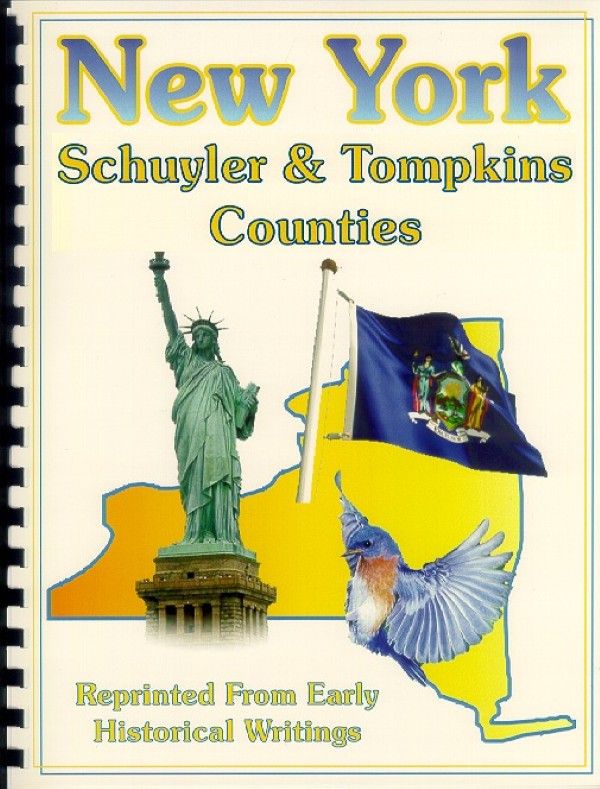Central
New York State
TOMPKINS COUNTY & SCHUYLER COUNTY
ILLUSTRATED BOOKLET
The early days of
Tompkins and Schuyler Counties in the State of New York, and their various
towns and townships, are recalled through a mixture of colorful tales and
factual data in this NEW 21 Page Booklet reprinted primarily from two hard-to-find books: the 1841
edition of Historical Collections of the State of New York by John
Warner Barber and Henry Howe, and the 1940 edition of New York, a Guide
to the Empire State, a WPA project.
The spiral-bound booklet, sold exclusively on eBay, is printed one-sided on 60# paper, with the print enlarged for
easier reading. A clear vinyl sheet has been added to protect the front cover.
The communities mentioned include:
Caroline, Slatersville, Danby, Dryden, Etna, Verna, West Dryden, Enfield,
Groton, Hector, Burdette, Ithaca, Lansing, Newfield, Ulysses, Watkin's
Glen, Montour Falls and Trumansburg.
Among the many interesting topics in the booklet
are: a bloody battle with a bear, a deer tale at Watkin's Glen, how the
term "teetotalers" originated, and "Far Above Cayuga's Waters" Cornell University,
complete with a 1940 map and tour.
Names mentioned include: Simeon DeWitt, the
Rev. Mandeville, William Wisner, A.E. Campbell, John W. McCullough, Ebenezer
Mack, Samuel and George Weyburn, David B. Hill, Queen Catherine Montour,
Louis Philippe (Louis XVII), Robert H. Treman, Gen. John Sullivan, Louis
Agassiz Fuertes, Ezra Cornell, Andrew Dickson White, Charles Babcock, Henry
W. Sage, Willard D. Straight, William H. Miller, Jennie McGraw, John McGraw,
Goldwin Smith, Liberty Hyde Bailey, Martha Van Rensselaer, Issac Phillips
Roberts and James Law.
ILLUSTRATIONS depict
the Eastern View of Ithaca and Goodwin's Falls in Ulysses.
Schuyler County was formed from sections of
Steuben, Chemung and Tompkins Counties in 1854. The Barber-Howe book was
written before this change, but information on both counties is contained
in excerpts from the WPA Writer's Project book. This material gives a nostalgic
glympse of the area a century after the Barber-Howe book, including interesting
historical notes, especially as they relate to sightseeing possibilities.
There's also a small map of the area from a 1948 booklet printed by the
New York Telephone Company.
|

